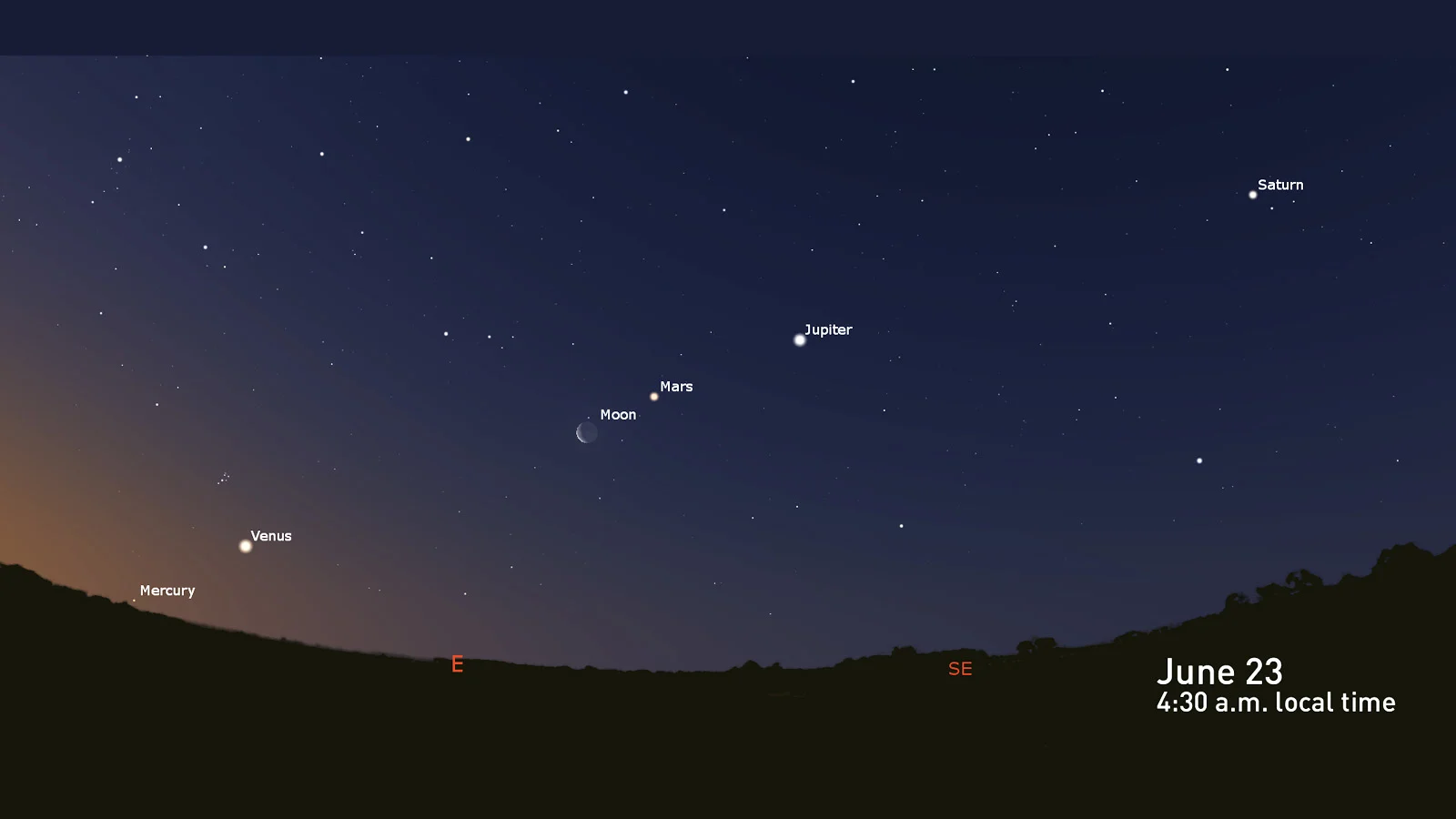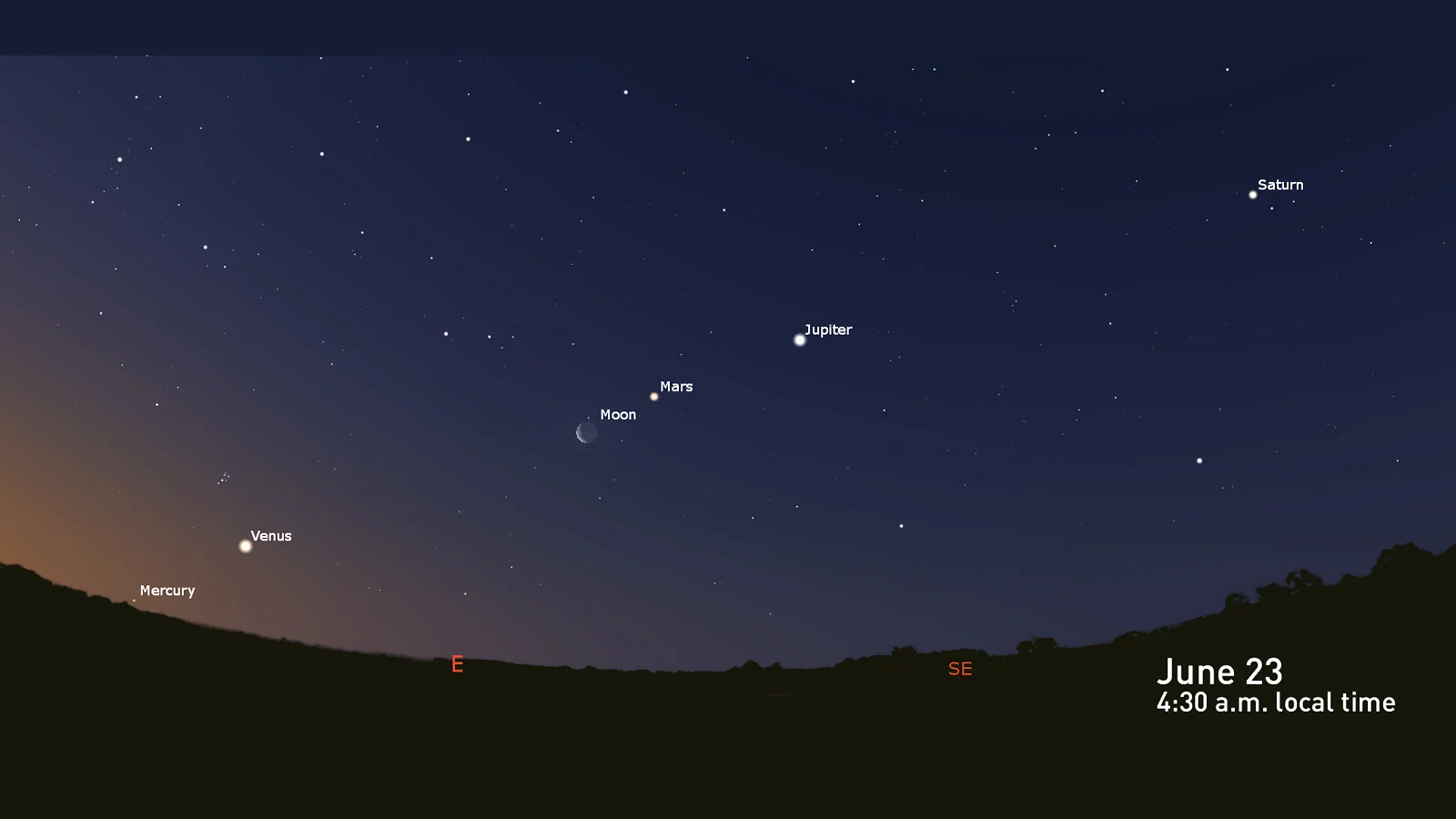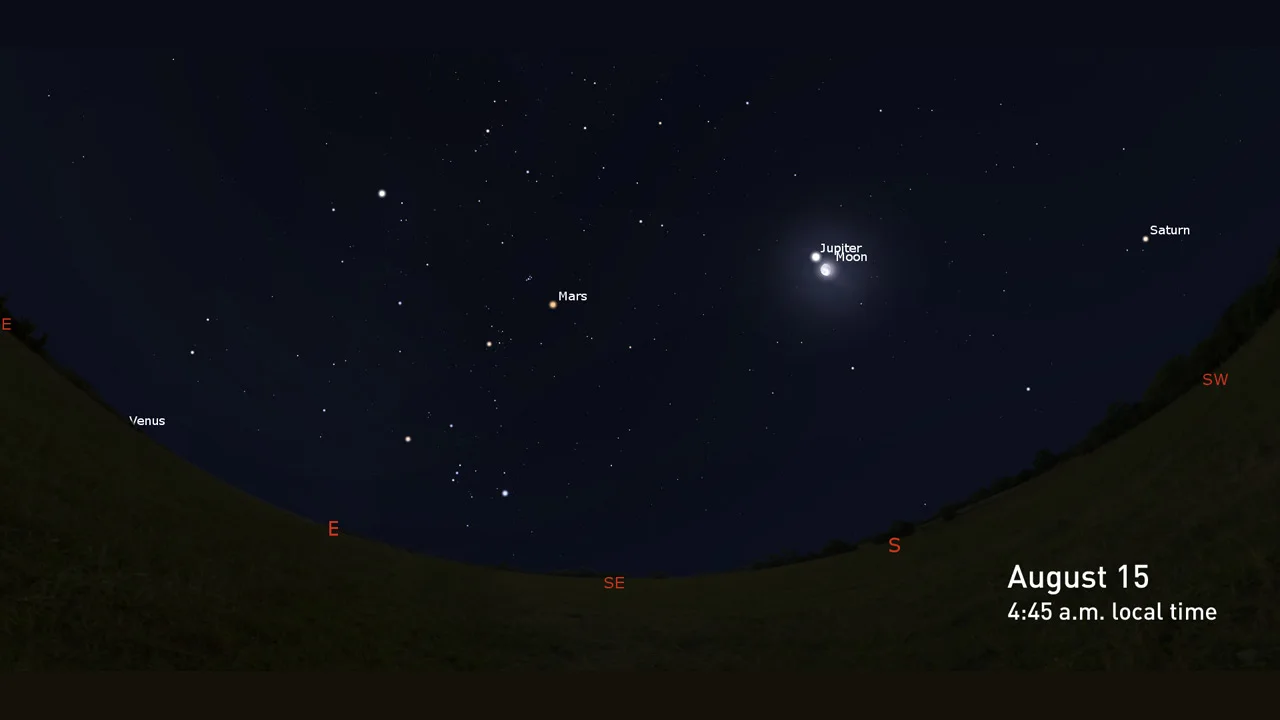
A predawn planetary alignment adorns the eastern sky this week
Need an excuse to get up early this week?
Early risers, take a moment to pause and turn your gaze to the east in the hours just before sunrise for the next week or so. If you have clear skies, you'll be rewarded with a predawn treat, featuring the five brightest planets in our sky.
For nearly the entire year, so far, anyone who has been out and about in the predawn hours has been accompanied by array of celestial objects in the eastern sky.
This week, from June 22-26, we'll be seeing a special alignment of the five brightest planets — Mercury, Venus, Mars, Jupiter, and Saturn.

Technically, the six innermost planets of our solar system are visible in this simulation — Mercury, Venus, Mars, Jupiter, and Saturn, along with the sixth, Earth (the horizon). Credit: Stellarium/Scott Sutherland
Although Mars, Jupiter and Saturn will be up for at least a few hours before sunrise, it takes a bit more care to spot Venus and Mercury.
Venus rises around 4 a.m. local time, roughly an hour before the Sun crests the horizon, and as the brightest of planets, it should be fairly easy to see. Mercury, however, becomes visible starting at around 4:30, just as the first hints of morning twilight become visible. Also, it only pokes up just above the horizon, completing the five-planet lineup just in time before the dawn begins to — planet by planet — conceal the alignment from our view.
There's an extra guest joining the parade, as well. Look for the Waning Crescent Moon to swing past the planetary lineup throughout the week, starting between Mars and Jupiter on the morning of the 22nd, and ending up as just a thin sliver between Venus and Mercury by the 26th.
Watch below: What's that in the sky? How to identify that flash of light you just saw
Throughout the season, this celestial lineup will change.
Mercury is only visible for a few weeks, becoming lost in the glare of the Sun by early July. Venus will vanish from sight in the same way roughly a month later.
Meanwhile, the other planets in the alignment — Mars, Jupiter, and Saturn — will be stretching out across the sky, putting more space between themselves the further into summer we get.

This simulated view of the predawn sky for August 15, 2022 shows that Venus is just beyond the eastern horizon, not set to rise until the Sun's light is already illuminating the sky. Meanwhile, Mars, Jupiter and Saturn are stretched out, covering nearly the entire space of the southern sky. Credit: Stellarium/Scott Sutherland
By September, these three remaining objects in the alignment will be stretched across the sky, from southeast to southwest, easily spotted much earlier in the night.
What's coming up next? Watch for two overlapping meteor showers to begin lighting up the night towards the end of July.
